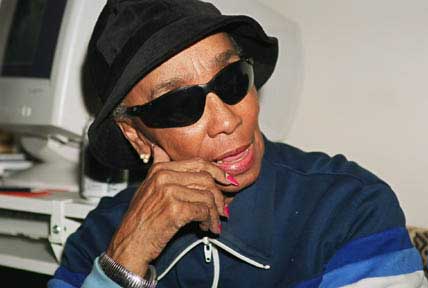
Swing Central party with Norma Miller
What a treat!!!!
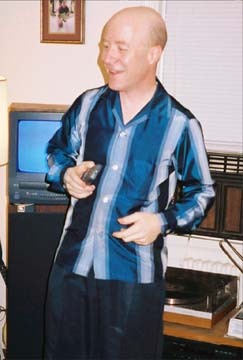
Tommy Greco
Tommy Greco, Arlington Cablevison's Producer of the Year threw a little soiree on Sunday February 9, 2003 for all the folks who had been a part of the show. (Actually, Emily Schwartz did all the heavy lifting with all the invitations and logistics...) When the guests arrived, we found out that not only had Tommy sprung for free pizza, but that NORMA MILLER, formerly of Whitey's Lindy Hoppers would be the surprise attraction. What a thrill! Believe me, Norma is one of the nicest people in the world and has an encyclopedic memory of the Swing Era. She went one-for one on Swing with all the musicians who were eager to pick her brains for insights into Fletcher Henderson, Billy Strayhorn or Buck Clayton. While she was doing this, she kept up a running commentary on Dancing and current events of the 30s and 40s. This was a totally fantastic evening and I was just thrilled to be a part of it!
Personally, I was thrilled to have a few moments to chat with Norma about two subjects that are very near and dear to me: The Savoy Pavilion at the 1939 Worlds Fair; and the star-studded but ill-fated 1939 production of Swingin' the Dream at the Center Theater in Rockefeller Plaza. Robin Cunningham and I also took a bunch of pictures. So, depending on your interests, you have a bunch options:
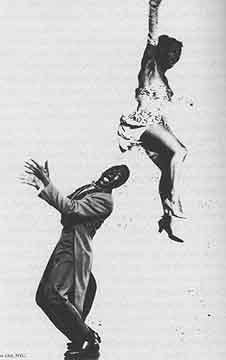
Norma Miller and Billy Ricker
Norma Miller was first discovered as a gifted young Lindy Hopper by Herbert "Whitey" White when she was just 14 years old. Since she was too young to go into the Savoy Ballroom, she often danced outside on the sidewalk where the music could be heard quite well. The first time Whitey saw her she appeared out of nowhere on the dance floor and won a Savoy dance contest with Twistmouth George as her partner. Norma Miller was the youngest of Whitey's Lindy Hoppers when she joined the group. She was from the start a very creative dancer with her own often comic style and she possessed an outstanding sense of rhythm. A vivacious and outspoken person, she is always the life of the party.
You can read much more about Norma at The Archives of Early Lindy Hop --- and, you can buy her fantastic book Swingin' at the Savoy there as well!!!
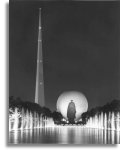
The 1939 World's Fair
The 1939 New York World's Fair compresses all the hopes and enthusiasm of American popular culture into one jubilant celebration of the World of Tommorrow -- all of the icons of the Streamline Decade came together in Flushing Meadows -- social planning, superhighways, television, robots, electrical appliances and (of course) Swing music. It's impossible to give a complete description of the phenomenal 1939 Fair. Click here for a website that gives a very good overview of the Fair and also has links to a lot of other sites.
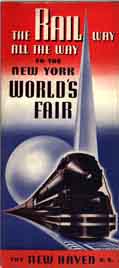
Railroads Printed Special Timetables
In brief, the fair was organized into several zones (Transportation, Commerce, International, etc). The most controversial was the Amusement Zone of the 1939/1940 Fair which, although extremely popular, was peripheral to the Fair planners' intentions of displaying the benefits to be realized in corporate America's vision of the World of Tomorrow. Many scholars and critics have likened the Amusements Area to a massive county fair, and many of the amusement exhibits were marketed as educational exhibits when they in fact simulated vaudeville acts or strip shows.
Two of the more auspicious exhibits were the Frozen Alive Girl and the Dream of Venus Building, designed in part by Salvador Dali, which featured scantily-clad women and masked the display as the promotion of art or supposed advancements in biotechnology. The Amusement Area's Little Miracle Town, a collection of performing midgets, also hardly contributed to the ideals of a better way of life for all through futuristic vision.
On the other hand, the Amusement Zone was a major factor in drawing people to the fair. The Cyclone roller coaster, and the Parachute Jump were well-known rides
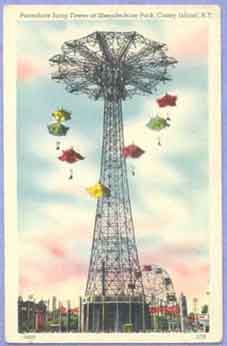
The Parachute Jump
The most popular attraction, however was the Dance Pavillion and its next-door neighbor, Billy Rose's Aquacade. I have a very grainy clip from a newsreel taken during the 1939 fair which shows about ten seconds of Whitey's Lindy Hoppers performing outside the Dance Pavillion. A large sign proclaims that they are " The World's Greatest Colored Dancers". This image has been with me for some time, and I was thrilled to get Norma's perspective on things
I guess that there is a difference between looking at the 1939 Fair as a collection of Style Moderne objects and actually having been there... From what I heard, Norma wasn't that thrilled about the affair -- she says that they had to do a demo every fifteen minutes, and that the food and the floor were not much to speak of. She had seen the grainy clip of film which shows a Hellzapoppin type routine replete with aerials, and said "Yep, that's what we did every fifteen minutes..." Believe me, the stamina required for this must have been incredible! This is Iron Man Lindy Hop!
Norma had much fonder sentiments about Billy Rose's Aquacade, located near Fountain Lake, which was a synchronized swimming show complete with live music, and it frequently featured a young Esther Williams and Johnny Weismuller of Tarzan movie fame.
Norma also recalled two events from the Parachute Jump: (1) a couple got stuck on the ride and it took nearly 20 hours to free them; and (2) a couple got married on the ride -- as soon as they said "I Do" their parachute was dropped.
After talking with Norma, I have come to agree even more strongly with the opinion of sociologist Stanley Applebaum: "...However highminded the aims of the Fair Corporation and however educational some of the Amusement Area entertainments, the timeless and universal aura of carnie and Coney were all-pervasive. If the fair was to be, in fact, for 'the people,' then it had to include some naked sensationalism (no pun intended), and the Amusements Area provided spectacles somewhat free of social theory..."

Louis Armstrong as Bottom
Rockefeller Center was taken by many that "The World of Tommorrow is Here." The ultra-modern complex thrilled and astounded all who visited it and gave hope that a beuatiful and progressive future could be carved out of the Depression. All of us are familiar with the successes: Radio City Music Hall, 30 Rockefeller Center, the Rainbow Room, etc. We are not however, as familiar with the failures. Specifically, the Center Theater with 5,000 seats, directly across the street from the Music Hall never had a full house and by 1939 was a MAJOR disappointment to Center management.
One last star-studded effort was planned to save the theater: a star-studded version of Shakespeare's Midsummer Night's Dream would be put on using almost everyone in New York who was Famous or Talented (preferably both...). By way of context, the 1930s saw a series of vibrant revivals of Shakespeare works. Theatergoers had the opportunity to see Lunt and Fontanne in The Taming of the Shrew; The Yiddish's Theatre's Merchant of Venice with Maurice Moscovitch; Helen Hayes in Twlefth Night; Orson Welles' production of Julius Caesar and his African-American Macbeth for the Harlem unit of the Federal Theatre; Katharine Hepburn was a huge success as Rosalind in As You Like It.
The play, called Swingin the Dream, reset A Midsummer Night's Dream in 19th Century New Orleans, complete with jazz and voodoo. The producers hoped to capitalize on the momentum for swinging the classics that had kept Bill Robinson's Hot Mikado at Standing Room Only. (In our discussion, Norma sang a few bars of the Mikado's entrance for us)
Louis Armstong (pictured above) played Bottom. Tatiana, Queen of the Pixies was played by Maxine Sullivan who made her entrance in a motorized guide's chair from the World's Fair (see above). There was a supporting cast of 150 which included Moms Mabley, Butterfly McQueen and Dorothy Dandridge. Even white actors such as Ruth Ford and Dorthy McGuire were included.
The play was written by Gilbert Seldes (1893-1969), who occupies a unique niche in the intellectual and cultural history of twentieth-century America. While best known as the first "highbrow" intellectual to treat popular culture as a serious subject for cultural criticism, his career also included stints as managing editor of one of the most famous "little magazines" of the 1920s, The Dial, a theatrical producer, a radio writer and producer, the first director of programming for CBS television, and Dean of the Annenberg School of Communications. A man after my own heart, Seldes was an intellectual whose writings at the beginning of his career helped establish The Wasteland and Ulysees as modern classics, and at the end wrote a favorable review of The Beverly Hillbillies in TV Guide. From Joyce to Jethro...
The lyrics were written by Jimmy Van Heusen, a Tin Pan Alley songwriter who was active from the late 1930s well into the 1960s. He collaborated primarily with lyricists Eddie De Lange; Johnny Burke and Sammy Cahn. In 1939, the team of Van Heusen and De Lange, wrote all of the songs for Swingin' the Dream, including the classic Darn That Dream.
Into this all-star mix was Agnes DeMille who did the choreography. She brought Whitey's Lindy Hoppers down from the World's Fair (and the Savoy Ballroom) for specialty numbers. Norma remarked on how difficult it was to perform on their excruciating schedule at the Fair and then attend rehearsals. It seems that Ms. De Mille was very demanding. Norma also told me that the artwork for the sets was done by none other than Walt Disney! (I was stunned to discover that!)
The music was provided by thre organizations: The Benny Goodman Sextet was in a side box on the left of the stage; Bud Freeman's Summa Cum Laude band was on the right and a full orchestra conducted by Don Voorhees was in the pit. The rehearsal pianist was stride master and composer James P. Johnson.
One would think that this would be a formulation for instant success. Management even scaled down prices to assure a full house. You could see all of these legendary performers for $1.65
What happened? Here is an article from JAZZ INFORMATION (VOL. I, No. 14 DECEMBER 15, 1939):
"... SWING DREAM HAS RUDE AWAKENING --- 'Swingin' The Dream', modern production of 'A Midsummer Night's Dream" at the Center Theater New York, closed Saturday night, December 9, eleven days after opening. Louis Armstrong, Maxine Sullivan, the Benny Goodman Sextet, and Bud Freeman's orchestra were featured in the show. There were a total of 13 performances..."
Apparently, the production was fairly disorganized -- folks loved the company, but the producers attempted too much with too many people
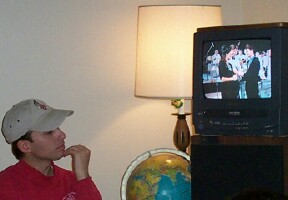
Lots of Videos to Watch
Photo Credit: Robin Cunningham
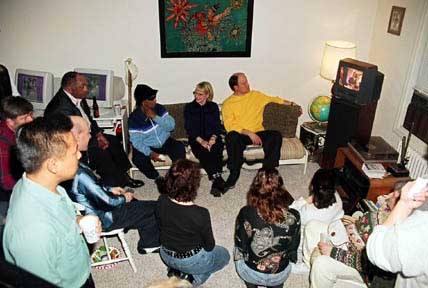
Everyone had a very good time
Photo Credit: Stan Weinstein of Dreams and Memories
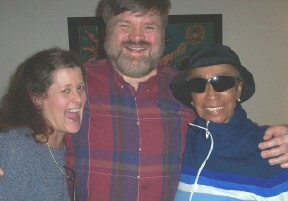
Tom and Robin with Norma
Photo Credit: Robin Cunningham
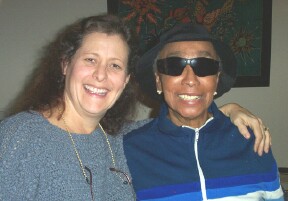
Robin and Norma
Photo Credit: Robin Cunningham

Famous Photographer Stan Weinstein
of Dreams and Memories
Photo Credit: Robin Cunningham

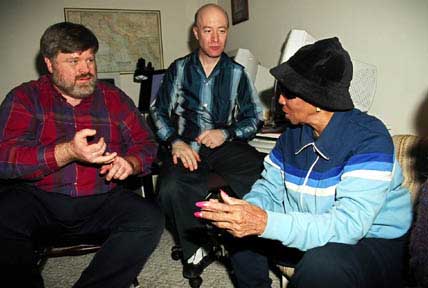
Tom Cunningham had a lot to share with Norma
Photo Credit: Stan Weinstein of Dreams and Memories
The Pizza Guy was almost as welcome as Norma
Photo Credit: Robin Cunningham
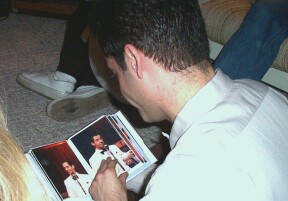
Craig Gildner
Looking at photos of.. Craig Gildner
Photo Credit: Robin Cunningham
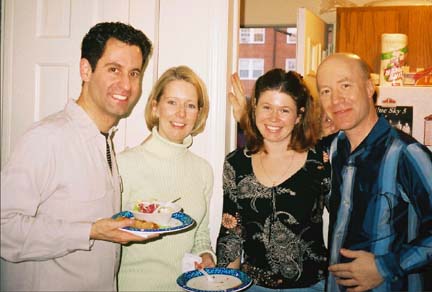
Plenty of good food, friends, and conversation
Photo Credit: Robin Cunningham

Emily and Sharon
Photo Credit: Stan Weinstein of Dreams and Memories
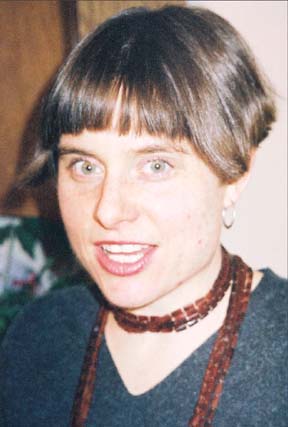
Gretchen: folklorist, TV pro
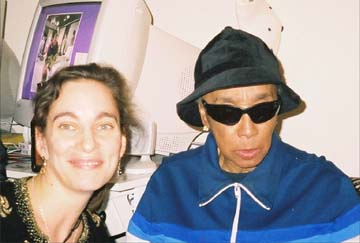
Norma and Emily
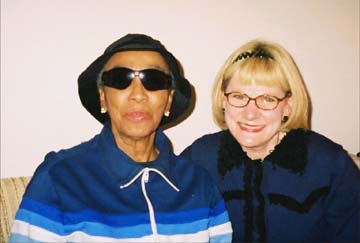
Norma and Karyn

Black Background: Karyn, Stan, Andy, Sharon
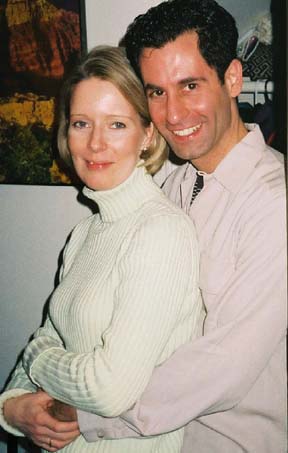
Angela and Craig
One more thing: I can recall that Cherri Harris and I had a conversation about my all-time favorite Horror Movie Villan, Rondo Hatton, AKA "The Creeper" His story is fascinating, too.
Counter for the Entire Site (not just this page..)
Home | About Lindy | 1940s Collectibles | Upcoming Events | Vintage Clothing
The Guide - Establishments - Travel - Accessories
Music | Links | Photo Gallery | Extras | Contact